
Hans Talhoffer was a German fencing master. His martial lineage is unknown, but his writings make it clear that he had some connection to the tradition of Johannes Liechtenauer, the grand master of a well-known Medieval German school of fencing. Talhoffer was a well-educated man who took interest in astrology, mathematics, onomastics, and the auctoritas and the ratio. He authored at least five fencing manuals during the course of his career, and appears to have made his living teaching, including training people for trial by combat.

Nuremberg Castle is a group of medieval fortified buildings on a sandstone ridge dominating the historical center of Nuremberg in Bavaria, Germany.

The Bavarian State Library in Munich is the central "Landesbibliothek", i. e. the state library of the Free State of Bavaria, the biggest universal and research library in Germany and one of Europe's most important universal libraries. With its collections currently comprising around 10.89 million books, it ranks among the best research libraries worldwide. Moreover, its historical stock encompasses one of the most important manuscript collections of the world, the largest collection of incunabula worldwide, as well as numerous further important special collections. Its collection of historical prints before 1850 number almost one million units.
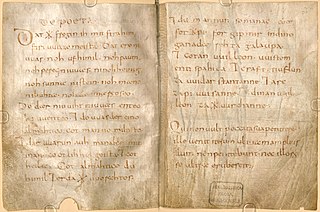
The Wessobrunn Prayer is among the earliest known poetic works in Old High German, believed to date from the end of the 8th century.
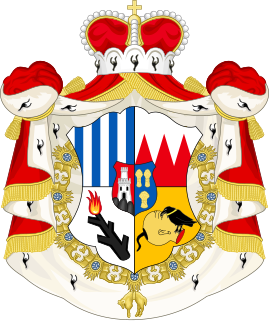
Schwarzenberg is a German (Franconian) and Czech (Bohemian) aristocratic family, and it was one of the most prominent European noble houses. The Schwarzenbergs are members of the German nobility and Czech nobility and they held the rank of Princes of the Holy Roman Empire. The family belongs to the high nobility and traces its roots to the Lords of Seinsheim during the Middle Ages.

Saal is a municipality in the district of Kelheim in Bavaria in Germany. It is located along the banks of the Danube River, around 25 km southwest of Regensburg.
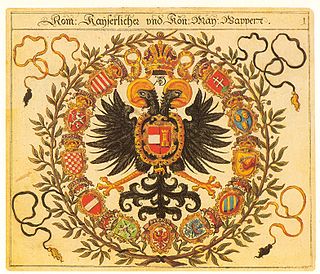
Siebmachers Wappenbuch is a roll of arms first published in 1605 as two heraldic multivolume book series of armorial bearings or coats of arms of the nobility of the Holy Roman Empire, as well as coats of arms of city-states and some burgher families. Founded and compiled by Johann Ambrosius Siebmacher, a German heraldic artist, copperplate engraver, etcher and publisher from Nuremberg, these works became an important source of heraldry of the German-speaking regions.
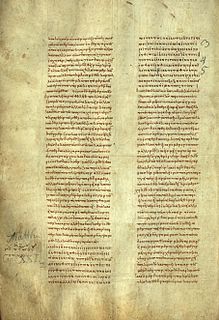
Codex Monacensis designated by X or 033 (in the Gregory-Aland numbering), A3 (von Soden), is a Greek uncial manuscript of the Gospels, dated palaeographically to the 9th or 10th century. The manuscript is lacunose.
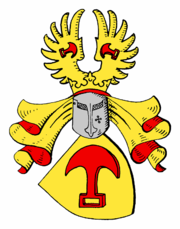
Franckenstein is the name of a feudal, Franconian noble family in Germany, descendants from the Lords of Lützelbach from Höchst im Odenwald, respectively their offsprings, the Dynasts of the Breuberg family.
The County Palatine of Tübingen was a state of the Holy Roman Empire in the medieval period. The dynasty, originally based in Nagold, managed to acquire extensive holdings over the course of their time in power, distinguishing themselves by founding a large number monasteries in their territories. By the time of the High Middle Ages, several factors contributed to their economic decline, including the expenses of keeping court and extravagant donations to the monasteries they founded. The line itself experienced fragmentation into numerous cadet branches, the longest-lasting of which were the Counts of Tübingen-Lichteck and the Counts of Montfort (1787).

Adalram was an early 8th-century prelate active in Bavaria. He is known to have been archdeacon of the Salzburg diocese c. 819, and in 821 succeeded Arno as Archbishop of Salzburg. In 824, following the request of the emperor Louis the Pious, he received the pallium from Pope Eugenius II.
Anna Maria Princess of Eggenberg, née Brandenburg-Bayreuth (born 30 December 1609 in Bayreuth; died 8 May 1680 in Ödenburg) was a Margravine of Brandenburg-Bayreuth and, by marriage Johann Anton I von Eggenberg, a Fürstin (princess) of Eggenberg.
Magnus Agricola was a German Lutheran superintendent and theologian.

The Wernigerode Armorial is an armorial compiled in southern Germany in the late 15th century.

Conrad Grünenberg, also spelled Konrad, Grünemberg, Grünberg was a patrician from Constance in southern Germany, known as the author of three books, two armorials and a travelogue: the Österreichische Wappenchronik ; the Wappenbuch, containing some 2000 coats-of-arms, which he presented as a gift to Emperor Frederick III; and the illustrated description of his 1486 pilgrimage to Jerusalem.

The so-called Scheibler Armorial is an armorial manuscript compiled, in two separate portions, over the course of the 15th to 17th centuries. It is named for its first known private owners, the baronial Scheibler family of Hülhoven in the Rhineland.

The Kleine Heidelberger Liederhandschift is a collection of Middle High German Minnesang texts. In Minnesang scholarship it is referred to as MS. A. It is held by the Heidelberg University Library with the signature Cod.Pal.germ. 357.
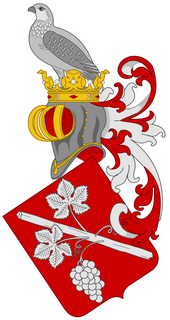
Kamenicky is a Czech noble family (uradel) originating from the Margraviate of Moravia. The family has been known since the 15th century. The name derives from the family's ancestral seat Kamenice in Moravia. Original seal from the year 1571 depicting the coat of arms is deposited in the Franzens museum in Brno. The coat of arms featuring a sloping wine tendril with two leaves and a bunch of grapes. One family branch got a majesty letter 1587 from the Holy Roman Emperor Rudolf II confirming the knighthood. In addition Kamenicky family is mentioned in the genealogist Bartholomeus Paprocký's work Diadochos published in Prague 1602.

The Burggraf von Regensburg was a Middle High German lyric poet who wrote Minnelieder. In his four surviving stanzas, love is not yet courtly love. In one, strongly contrary to later courtly convention, the woman serves the man. All his stanzas are preserved in two manuscripts, the 13th-century Kleine Heidelberger Liederhandschrift and the 14th-century Codex Manesse.

















